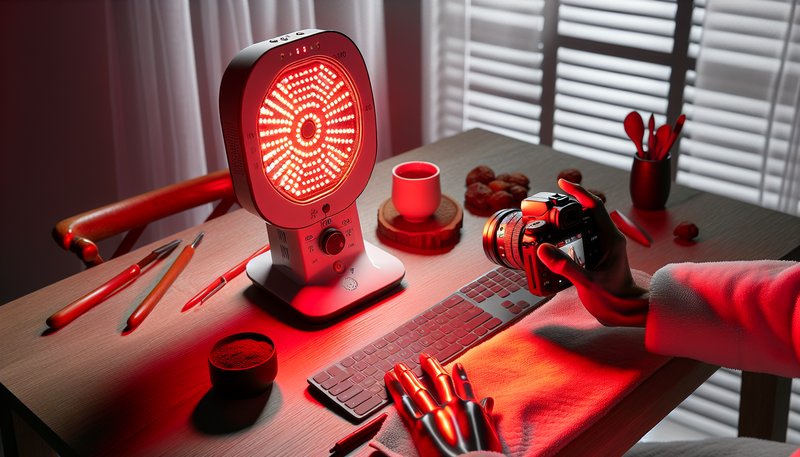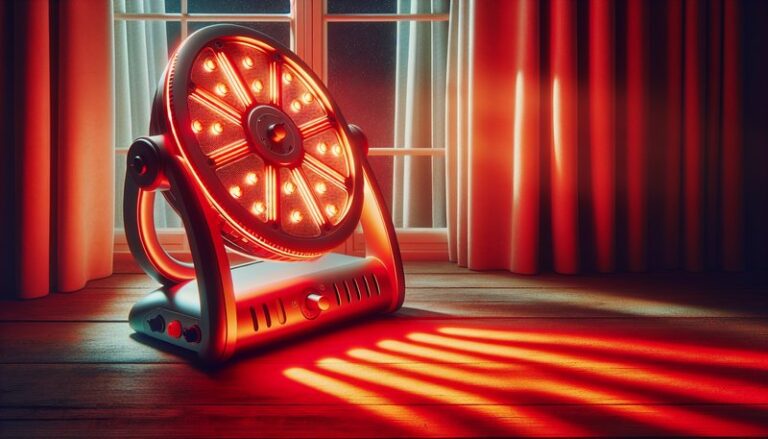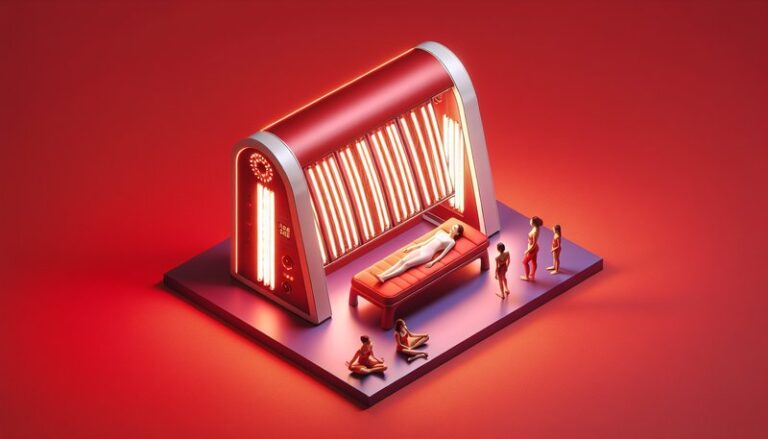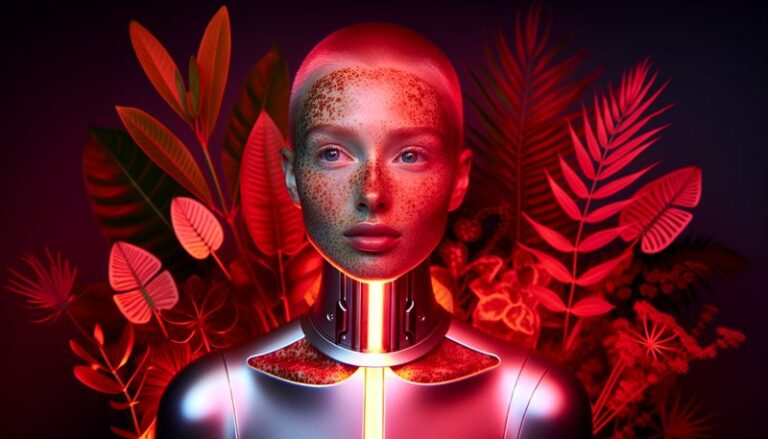Can Red Light Therapy Be Harmful?
Is red light therapy the next miracle treatment, or does it come with potential risks?
In recent years, red light therapy has gained popularity for its purported health benefits, ranging from skin rejuvenation to pain relief. However, as with any therapy, understanding its possible harms is crucial for making informed decisions about its use. This article will explore what red light therapy is, its benefits and potential risks, considerations before using it, alternatives, and conclude with whether it is recommended.
Key Takeaways
- Red light therapy is generally considered safe, but there may be some adverse effects for certain individuals.
- Optimal usage parameters, such as duration and intensity, are crucial to avoid potential harm.
- Consulting with a healthcare provider is advised, particularly for individuals with specific health concerns or conditions.
What is Red Light Therapy?
Red light therapy (RLT) involves the use of low-level wavelengths of red light to promote healing and regeneration in the body. It operates primarily through stimulating cellular processes, including ATP production, which is vital for cellular energy.
Red light therapy works by penetrating the skin and targeting deeper tissues without causing damage. Various devices, including handheld units and larger panels, deliver this therapeutic light in dermatology clinics and home settings. A growing body of research supports its use for various conditions, primarily due to its non-invasive nature.
Mechanism of Action
Red light therapy primarily utilizes wavelengths between 600 and 650 nanometers. These specific wavelengths are absorbed by chromophores in the mitochondria, leading to enhanced cellular function, reduced inflammation, and greater collagen production.
What are the Benefits of Red Light Therapy?
While understanding the potential harms is essential, exploring the benefits of red light therapy is equally important. Below are several advantages often associated with this therapy.
Check our latest on Does Red Light Therapy Dissolve Scars?
Skin Health Improvement
Numerous studies suggest that RLT can reduce signs of aging, such as wrinkles and fine lines. The therapy enhances collagen production, improving skin elasticity and texture. Many users also report a reduction in acne and scars after consistent RLT treatment.
Pain Relief and Muscle Recovery
Red light therapy has been shown to alleviate chronic pain conditions, including arthritis and muscle soreness. Athletes often use it post-exercise to accelerate recovery, with reports of reduced inflammation and quicker healing times for injuries.
Improved Wound Healing
Research has indicated that RLT can expedite the healing of wounds and ulcers by increasing blood circulation and stimulating tissue repair processes. This quality makes it particularly beneficial for individuals with diabetes or chronic wounds.
Enhanced Mood and Energy Levels
Some users report an uplift in mood and an increase in energy levels following red light therapy sessions. While more research is needed, preliminary findings suggest that RLT could have a positive impact on emotional well-being.
Is it Possible to Experience Harmful Effects from Red Light Therapy?
Despite its many benefits, there are scenarios wherein red light therapy could potentially cause harm. Understanding these risks aids individuals in making informed choices.
What are the Advantages of Aware Consultation?
It’s vital to consult health professionals before starting red light therapy. Professionals can provide personalized recommendations based on your health profile, ensuring that RLT aligns with your medical needs.
What are the Disadvantages of Lack of Regulation?
Many devices for home use are not regulated by health authorities, leading to inconsistencies in effectiveness and safety. This unregulated market may result in users inadvertently using subpar devices that could lead to negative outcomes.
What are the Things to Consider Before Using Red Light Therapy?
Before engaging in red light therapy, consider several critical factors to ensure its safe use.
Check out the details in Is Red Light Therapy Safe for Eyes?
Consulting with a Healthcare Provider
Always consult a healthcare provider, especially if you have preexisting conditions. This step ensures that RLT is suitable for you and allows you to understand any potential risks related to your specific health situation.
Device Quality and Type
Choosing a high-quality, reputable device is crucial. Some devices might provide inadequate wavelengths or power output, leading to ineffective or even harmful results. Researching product reviews and manufacturer reliability is advisable.
Duration and Frequency of Sessions
Overexposure can lead to adverse effects, such as skin irritation. It is essential to follow instructions regarding session length and frequency to avoid harm while receiving the benefits of therapy.
What are the Alternatives to Red Light Therapy?
For those seeking alternatives to red light therapy, several other options exist for similar therapeutic benefits.
Laser Therapy
Laser therapy uses focused light waves to treat a variety of conditions, similar to RLT but often with a higher intensity. This option can be more effective for particular medical applications but may come with increased risks.
Microdermabrasion
This procedure exfoliates the skin, removing dead skin cells and promoting rejuvenation. It may be a suitable alternative for enhancing skin appearance without the risks associated with light therapy.
Topical Treatments
Various creams and serums claim to deliver benefits similar to RLT, such as anti-aging properties. These topical treatments can be effective when formulated correctly, offering an alternative route without the use of light.
Conclusion: Is it Recommended to Use Red Light Therapy?
Overall, red light therapy can be beneficial for various applications, particularly in skin health and pain relief. While potential harms exist, they can often be mitigated through proper precautions and guidance. If you’re considering red light therapy, consulting a healthcare provider and utilizing high-quality equipment can enhance safety and effectiveness, making it a generally recommended practice for many individuals.
Frequently Asked Questions
Can red light therapy cause skin damage?
Red light therapy is generally safe and non-invasive. However, overuse or exposure to poorly manufactured devices can lead to skin irritation. Following recommended usage guidelines mitigates these risks.
How often should I use red light therapy for best results?
Consultation with a healthcare provider can help determine the optimal frequency based on individual needs. Many users find that sessions 2-3 times per week yield positive outcomes.
Are there specific conditions where red light therapy is contraindicated?
Individuals with specific skin conditions, active cancer, or those taking medications sensitive to light should approach red light therapy with caution. Always consult a healthcare provider for recommendations tailored to your circumstances.
Can I combine red light therapy with other treatments?
Yes, red light therapy can often be safely combined with other treatments. However, it’s essential to discuss this with your healthcare provider to ensure compatibility and safety.
Is red light therapy effective for weight loss?
While some anecdotal evidence suggests benefits for weight loss, further research is needed to establish its effectiveness. It should not replace traditional weight loss methods but can be considered a complementary treatment.






